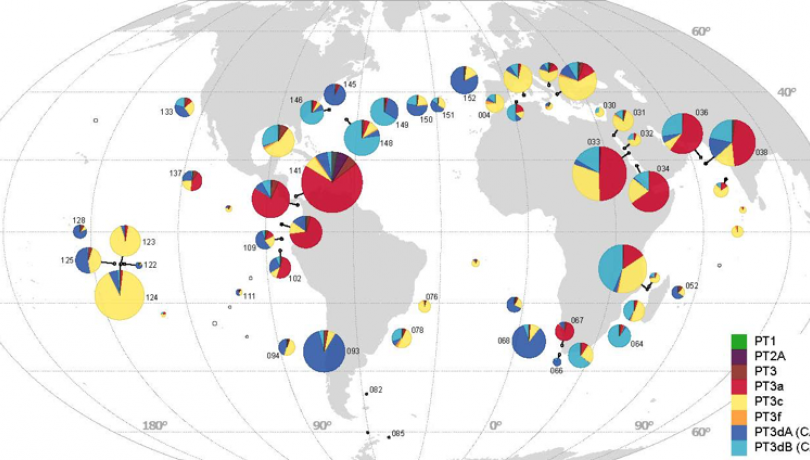Cyanobacteria of the genus Synechococcus are ubiquitous in the world ocean and contribute significantly to both the marine food chain and the carbon cycle. Like chameleons of the planktonic world, some of them are able to change pigmentation to match the ambient light color. Yet, their distribution or abundance has remained unknown so far. Research scientists from CNRS and CEA, together with international collaborators including ICM-CSIC, have just demonstrated these color-shifters are the most abundant group of Synechococcus in the ocean.

Cyanobacteria of the genus Synechococcus are ubiquitous in the world ocean and contribute significantly to both the marine food chain and the carbon cycle. Like chameleons of the planktonic world, some of them are able to change pigmentation to match the ambient light color. Yet, their distribution or abundance has remained unknown so far. Research scientists from CNRS and CEA, together with international collaborators including ICM-CSIC, have just demonstrated these color-shifters are the most abundant group of Synechococcus in the ocean.
In the study "Light color acclimation is a key process in the global ocean distribution of Synechococcus cyanobacteria", an international team of researchers has analyzed the global distribution of marine cyanobacteria of the genus Synechococcus, which appears to be one of the most pigmented phytoplanktonic groups. It is known that some strains have a fixed pigmentation that allows them to preferentially capture certain light wavelengths. Other strains can, like chameleons, change their pigmentation to preferentially capture blue or green light, depending on the dominant color of the ambient seawater, a phenomenon called chromatic acclimation. However, until now it was not known in what proportion these different types of pigments coexisted in different light environments.
To answer this question, a team of researchers from the Roscoff Biological Station, led by Dr. Laurence Garczarek, has developed a bioinformatic method to identify and quantify each of the types of Synechococcus pigments among the large metagenomics dataset of the Tara Oceans expedition. The first author of the work, Théophile Grébert, comments that "a combination of three genes, which encode the biosynthetic proteins of the photosynthetic antenna pigment, has been used to obtain a global distribution map of all types of Synechococcus pigments in the global ocean" (see top-right figure).
"These color-shifters are the most abundant group of Synechococcus in the ocean (see figure below), representing about 40% of the whole population at depth and high latitudes", explains Dr. Silvia Acinas. This study, she notes, "was obtained from the global Tara Oceans expedition, which generated a global ocean microbial genetic inventory of more than 40 million non-redundant genes from 236 high-resolution marine metagenomes, in which functional biogeography studies of any gene can be made".

This adaptive capacity is an important asset for such planktonic organisms that are drifted by currents in areas where water color varies, as it allows them to keep photosynthesizing efficiency and supply energy to the rest of the food web. This discovery represents a major breakthrough in our understanding of these organisms, which prove to be excellent bio-indicators of climate change.
Bibliography:
Light color acclimation is a key process in the global ocean distribution of Synechococcus cyanobacteria. Théophile Grébert, Hugo Doré, Frédéric Partensky, Gregory K. Farrant, Emmanuel S. Boss, Marc Picheral, Lionel Guidi, Stéphane Pesant, David J. Scanlan, Patrick Wincker, Silvia G. Acinas, David M. Kehoe and Laurence Garczarek, PNAS, 12 February 2018.